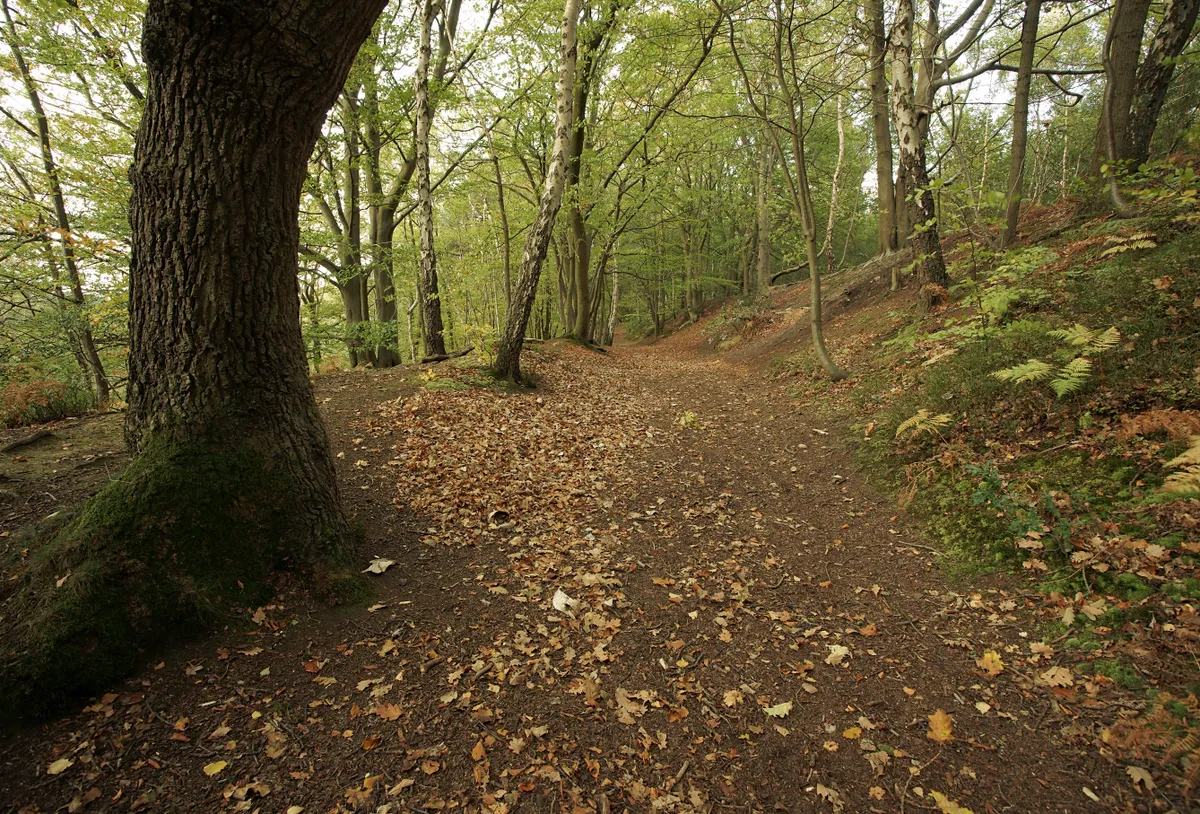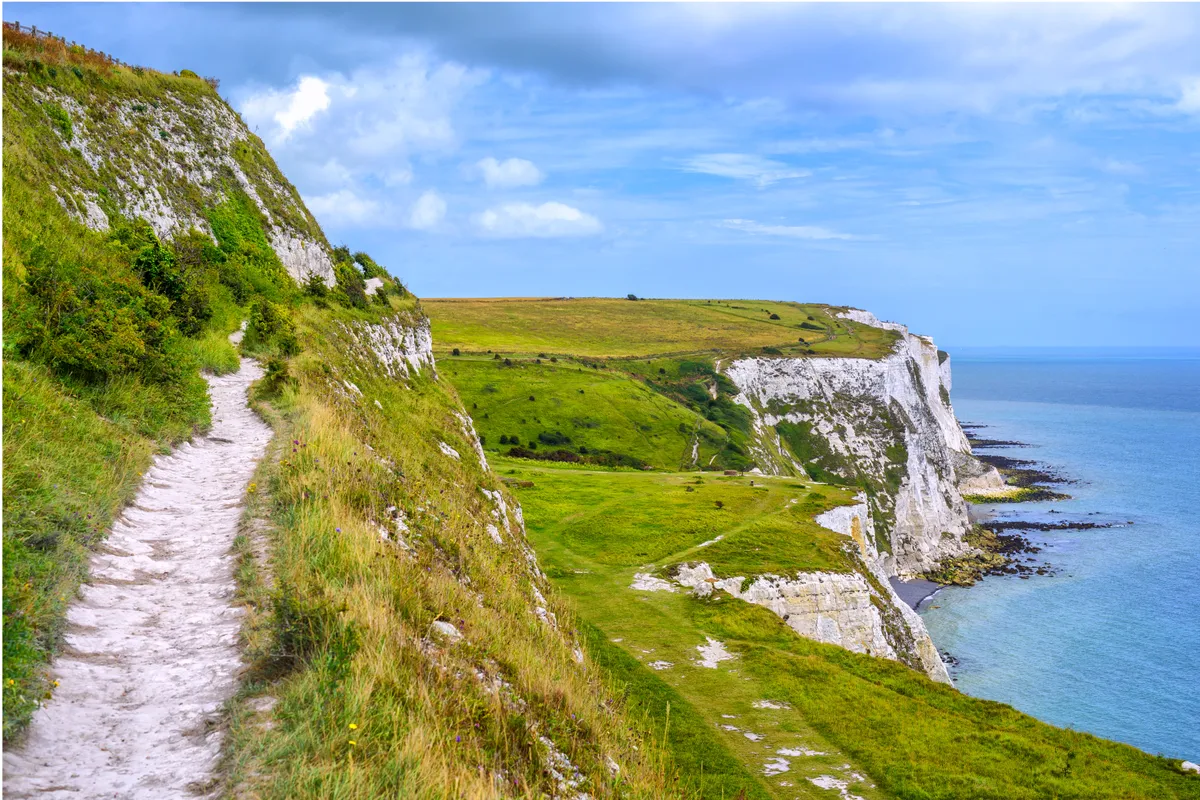What brings you here at this time of year – the trees in their autumn colours – has to be imagined away to visualise this place as it once was.

Built between 150 and 50BC, Oldbury Camp – one of the UK’s largest hillforts – was designed to make use of its surrounding landscape. The flat-topped, steep hill offered a great vantage point and springs provided fresh water. However, excavations have revealed that after the local Celtic Wealden people’s monumental effort in constructing two-and-a-half miles of earthwork defences, the fort was probably only in use for 50 years or so before they abandoned it, possibly fleeing the invading Romans in 55BC, who subsequently occupied the site. After their departure, the hill rewooded once more.
That was not the first time Oldbury Hill was inhabited, however. The Neanderthals were here, too, between 30,000 and 100,000 years ago. Traces of their tool-making have been found in rock shelters, resembling shallow caves, at the eastern edge of the wood near a path to the village of Oldbury.

The hill today
Nowadays, though, the 160 acres of woods are quieter. Walk along the cobble-like stony ground between steeply sloping, sandy banks cloaked with moss, like shagpile carpet. These tracks provide shelter on gusty days. If it’s been raining, take the higher ground alongside the tracks to avoid the puddles and mud.
Within the dappled hush, the woods feel timeless and undisturbed. Fathomlessly deep leaf litter is soft beneath your boots. Stumps and fallen branches slowly decompose. In the canopy, look for the yellowing leaves of silver birch and the changing hues of the rowan trees, accessorised with dangling clusters of orange-red berries. The forest floor is covered in nuts, or mast, from beech trees with rich russet leaves, and acorns from oaks. These two species are the last to lose their leaves.
Unchanged Vistas
Signs of human activity include the coppicing taking place on the hilltop – a practice that has been carried out here since Saxon times – as well as several twiggy dens and the frayed remains of rope swings. Signage is minimal, but it is easy to find the paths that follow the line of the eastern and western ramparts.
Along the eastern edge, a conservation meadow borders the wood, with breaks in the trees allowing views across the Kentish Weald towards the North Downs, giving an insight into what the Iron Agers would have seen from their defensive position over two millennia ago.
Words: Adrienne Wyper